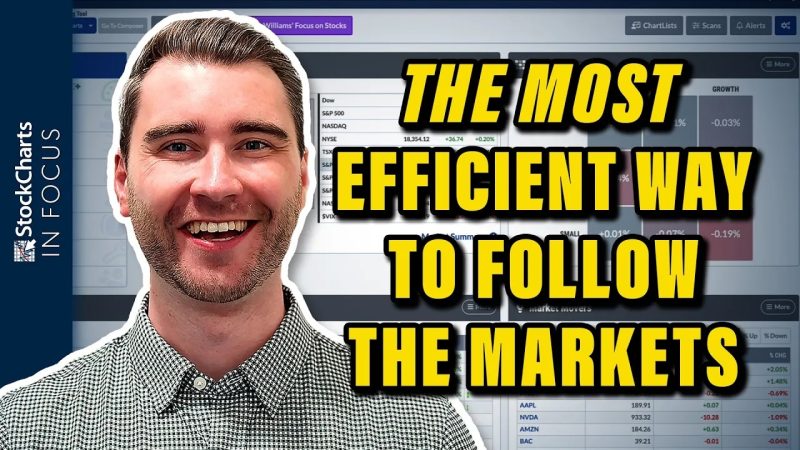The rapid evolution of technology has transformed the way we interact with financial markets. In today’s fast-paced world, having access to real-time market data and analytics is crucial for making informed investment decisions. With the plethora of information available, it can be overwhelming to keep track of everything that influences the markets.
One of the most efficient ways to stay ahead in the markets is by customizing your dashboard. A well-designed dashboard allows you to consolidate all the relevant information in one place, providing you with a comprehensive overview of market trends, news, and analysis. By tailoring your dashboard to your specific needs and preferences, you can streamline your decision-making process and react quickly to market shifts.
Key Benefits of Customizing Your Dashboard
1. Personalized Insights: By customizing your dashboard, you can prioritize the information that is most relevant to your investment strategy. Whether you are focused on specific asset classes, sectors, or regions, a personalized dashboard allows you to track the metrics that matter most to your portfolio.
2. Real-Time Updates: Customizing your dashboard enables you to receive real-time updates on market movements and news that could impact your investments. By setting up alerts for key events or triggers, you can stay informed and act swiftly in response to market changes.
3. Improved Decision-Making: A customized dashboard can help you make better-informed investment decisions by providing you with a holistic view of the markets. By combining quantitative data with qualitative insights, you can analyze trends and patterns more effectively, helping you identify opportunities and manage risks.
4. Enhanced User Experience: Tailoring your dashboard to your preferences can improve your overall user experience and efficiency. By organizing the layout, choosing relevant widgets, and customizing the color scheme, you can create a dashboard that is visually appealing and easy to navigate.
5. Increased Productivity: By consolidating all your market-related information in one place, a customized dashboard can save you time and increase your productivity. Instead of switching between multiple sources and platforms, you can access everything you need from a single dashboard, allowing you to focus on your investment strategy.
How to Customize Your Dashboard
1. Identify Your Goals and Objectives: Start by defining your investment goals and objectives. Understand your risk tolerance, time horizon, and preferred investment strategy to determine the key metrics and data points you need to track on your dashboard.
2. Choose the Right Tools and Platforms: Select a dashboard tool or platform that aligns with your requirements and preferences. Look for features such as customizable widgets, real-time data feeds, news integration, and mobile accessibility to create a personalized dashboard that meets your needs.
3. Customize Layout and Design: Arrange the layout of your dashboard to prioritize the most important information. Customize the design, color scheme, and fonts to create a visually appealing and user-friendly interface that enhances your overall user experience.
4. Add Relevant Widgets and Modules: Select the widgets and modules that provide the data and insights you need to make informed decisions. Include widgets for stock quotes, market indices, news feeds, economic calendars, technical analysis tools, and any other relevant information that supports your investment analysis.
5. Set Up Alerts and Notifications: Configure alerts and notifications for critical events, price movements, or market updates that require your attention. By staying informed in real time, you can respond quickly to changing market conditions and capitalize on opportunities as they arise.
6. Regularly Review and Update: Regularly review your dashboard to ensure it remains up to date and relevant to your investment objectives. Consider adding new widgets, removing outdated information, and adjusting the layout based on changing market dynamics and your evolving needs.
In conclusion, customizing your dashboard is a powerful tool for staying ahead in the markets and making informed investment decisions. By tailoring your dashboard to your specific requirements, you can streamline your analysis process, enhance your decision-making capabilities, and maximize your productivity. Embrace the benefits of customization and take control of your investment journey in today’s dynamic market environment.




























